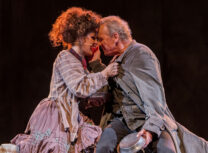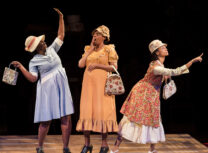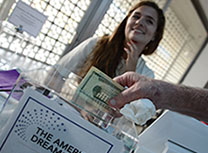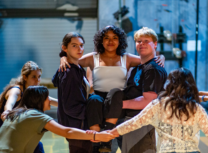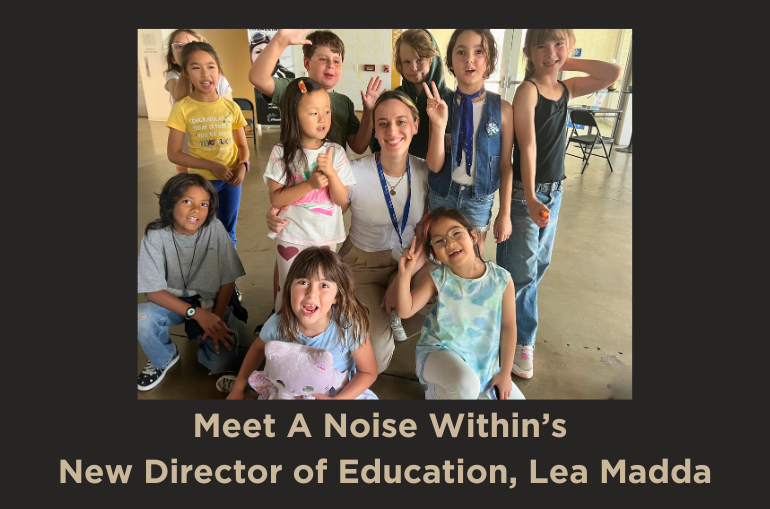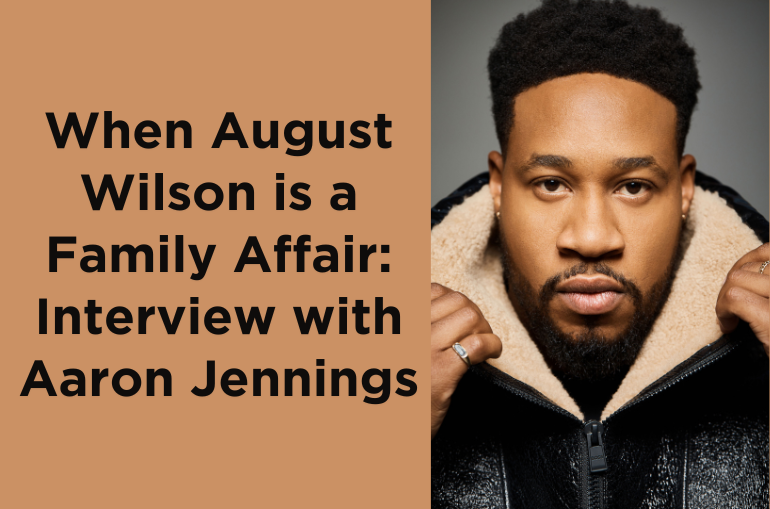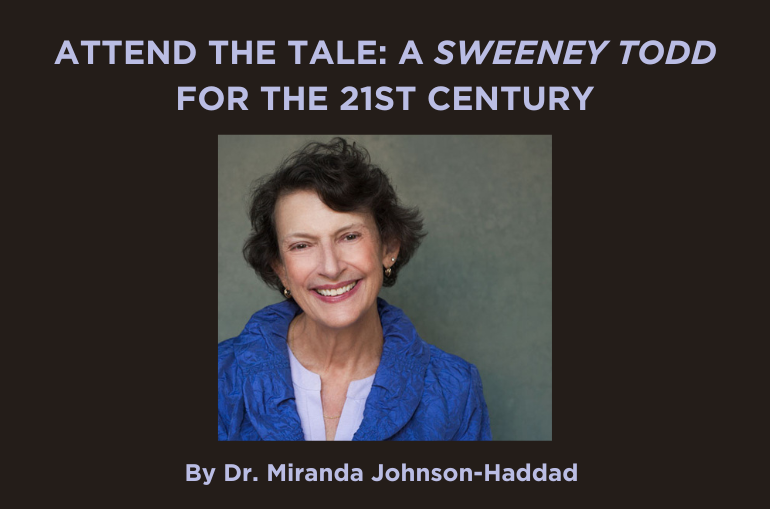Our Shared Catastrophes: A Conversation with A Noise Within’s Resident Artist Trisha Miller
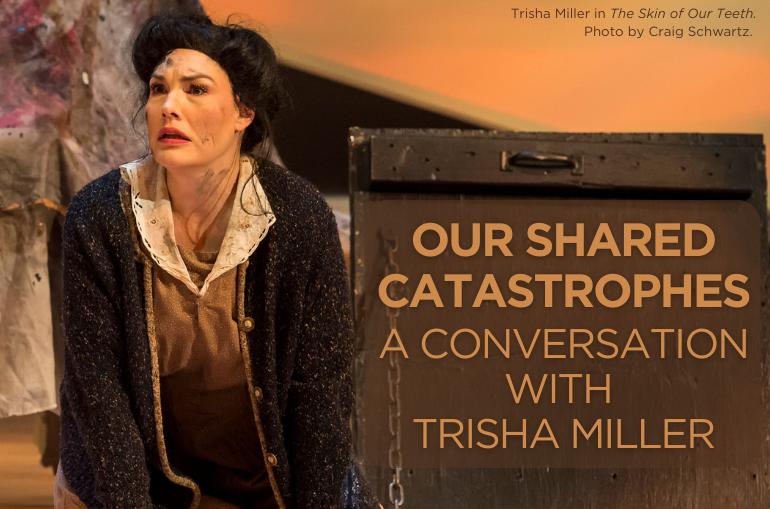
By A Noise Within
September 20, 2024
The Skin of our Teeth is a comedy that is littered with life-altering, potentially world-ending catastrophes. What drew you to this story, and being part of this kind of storytelling?
To me, this play couldn’t be timelier. With the worldwide pandemic, we have gone through something that was life-altering. No matter if we were in elementary school at the time, if we were raising kids, whatever age we were, everybody had a major life shift happen at the same time. And we all collectively had to figure out how to get through it when there was so much uncertainty. We all have had a shared catastrophe. That just strikes me to be incredibly unusual, you know? I mean, our grandparents went through a lot, but not this. And I think about this every time we finish the show–how amazingly capable we are as human beings to get through whatever’s thrown at us. When we can put our heads together, we can get through everything.
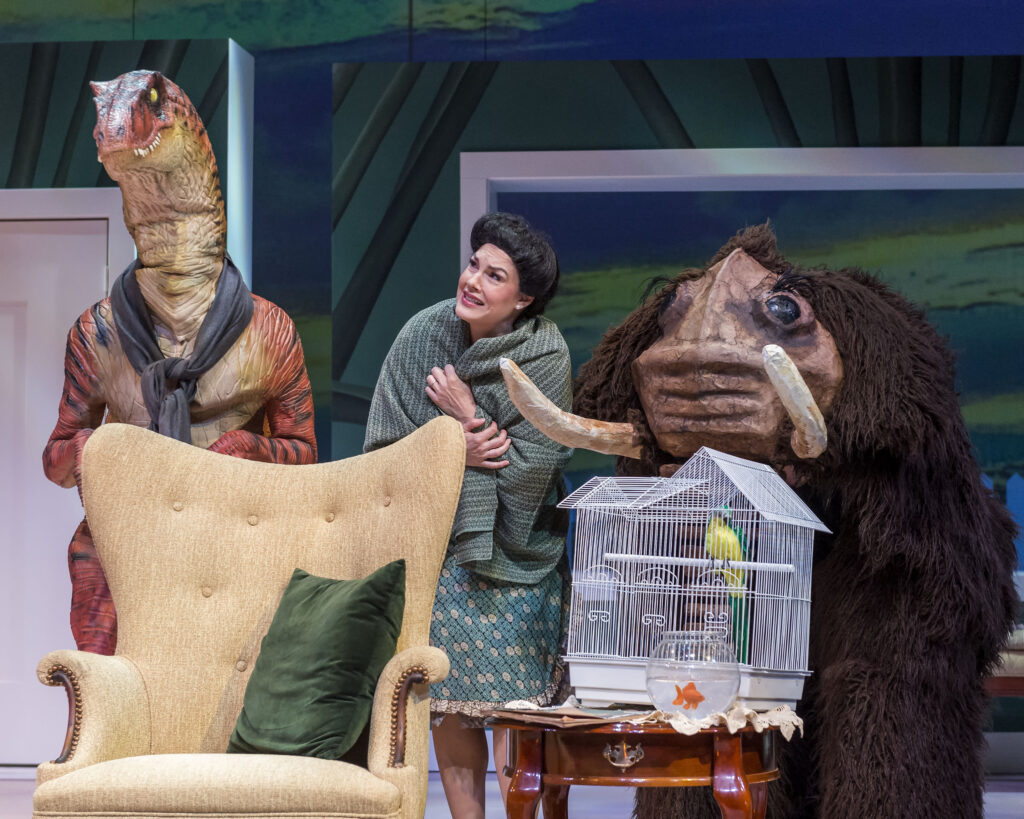 Micah Schneider, Trisha Miller, and Veronica McFarlane in The Skin of Our Teeth by Craig Schwartz.
Micah Schneider, Trisha Miller, and Veronica McFarlane in The Skin of Our Teeth by Craig Schwartz.
What surprises you about this play? And what do you think surprises the audiences?
I hate to admit it, but I used to think of Thornton Wilder as an old-fashioned playwright. I just didn’t know enough about him. With these pillars of American theater, you worry if it is going to be a crusty old play that we’re going to dust off and hope still resonates. But the exact opposite happened with The Skin of Our Teeth. The material is incredibly good. When people look at the title, or look at the playwright, I hope they are not saying, “That’s just not going to resonate with me. It’s too old.” This play is outrageous, it’s meta-theatrical, and it blew theatre conventions out of the water. It was groundbreaking in 1942. And I think it’s still groundbreaking. I mean, it’s 2024 and people are still leaving the theatre saying, “I can’t believe that this happened. I can’t believe what I just experienced.”
In addition to the regular audiences, hundreds of youth have come through to see student matinees. What is resonating with young audiences?
They are really engaged and it is very fun to share this with teenagers! Obviously, they love the dinosaur and the baby mammoth. I think they’re shocked because when the play begins because it feels sort of like a stylized, mid-century sitcom. But then Sabina (the maid) breaks the fourth wall and starts talking to the audience, the students are baffled, like “Wait. What IS this?” It completely defies their expectations. They realize it is possible that a character in a play would stop it and say how much they hate it. And then this character starts to engage the audience like a friend. In the talkbacks, the students are constantly asking “What is scripted and what is not scripted?” Which makes me think again, how incredibly ahead of his time Thornton Wilder was!
Somehow this play manages to make a comedy about catastrophes, and in it, you play one part of a married couple. Your comedic counterpart is fellow Resident Artist Freddy Stuart—do you think of yourselves as a catastrophic dynamic duo?
Oh God, in the years we have been Resident Artists at A Noise Within, Freddy and I have been through a lot of catastrophes together–King Lear, A Tale of Two Cities, Argonautika… We played another catastrophic couple in The Winter’s Tale too–Hermoine and Leontes. The huge catastrophe in that play is that he falsely accuses his wife of infidelity with his best friend, and all hell breaks loose. And Freddy commits a hundred percent to whatever he’s doing–he’s a first-rate actor. No matter what happens to us on stage, I can count on him, drama, comedy, whatever we’re going through! One of the things I love so much about working in this theatre and with a resident company, is that you develop a shorthand. You implicitly trust your scene partners.
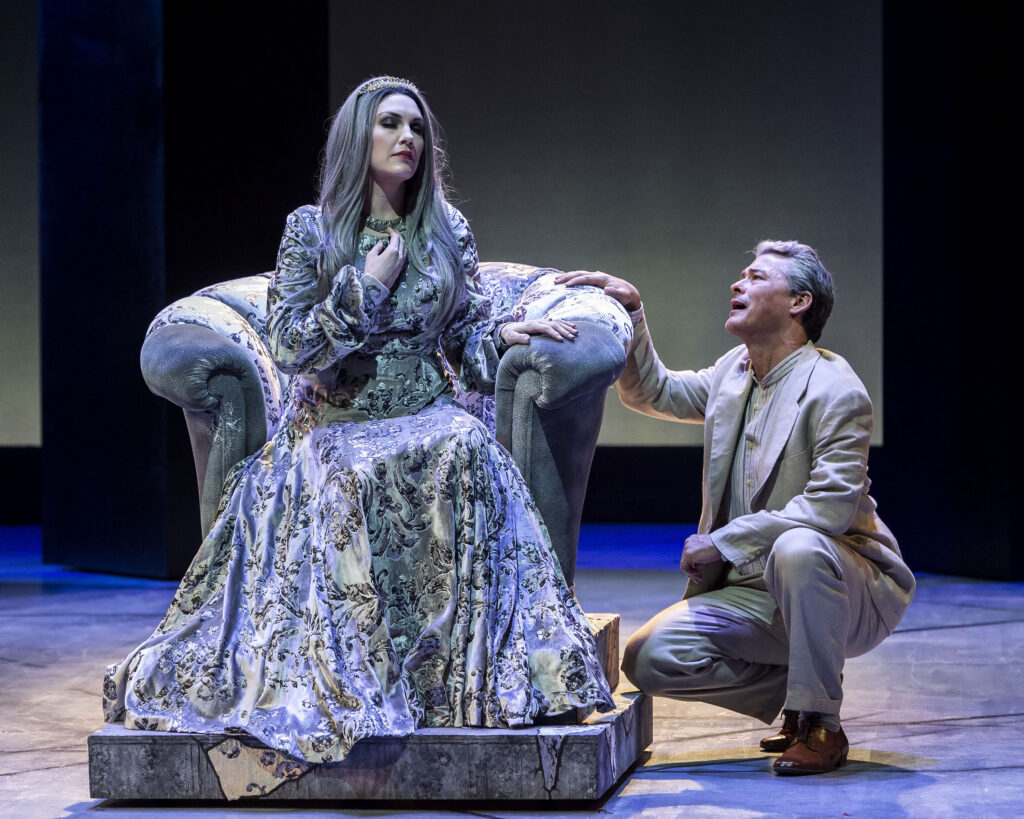 Trisha Miller and Frederick Stuart in The Winter’s Tale by Craig Schwartz.
Trisha Miller and Frederick Stuart in The Winter’s Tale by Craig Schwartz.
Freddy and I were working on The Winter’s Tale when the pandemic started. We were performing when we started hearing about all these other big regional theaters shutting down. And then, of course, we had to shut down our production, which was devastating. And here we are, reunited again in a much more joyful catastrophe. Catastrophe bookends!
As you are coming into the last stretch of this play, what will you still be thinking about when it is done?
Freddy has a final speech in the show where he says, “I know that every good and excellent thing in the world stands moment by moment on the razor’s edge of danger and must be fought for.”
If we really lived in that reality of how close we could be to it all going away–having a devastating accident on the freeway, or a big earthquake hitting, or suffering a medical emergency–we would not be able to get through the day. And at the end of the play, Sabina says she just needs to go to the movies sometimes because her heart can’t take it. I get that too! After going through this pandemic, I feel like that’s what so many of us need. Sometimes we just need to laugh collectively. Or go to a haunted house to scream together! Sometimes we just need to take a deep breath and not think about this razor’s edge. I think that’s one of the major reasons people come to the theatre in the first place, right? We come together to laugh or to cry, or both. Theatre gives us necessary catharsis.
For information on The Skin of Our Teeth, click here.
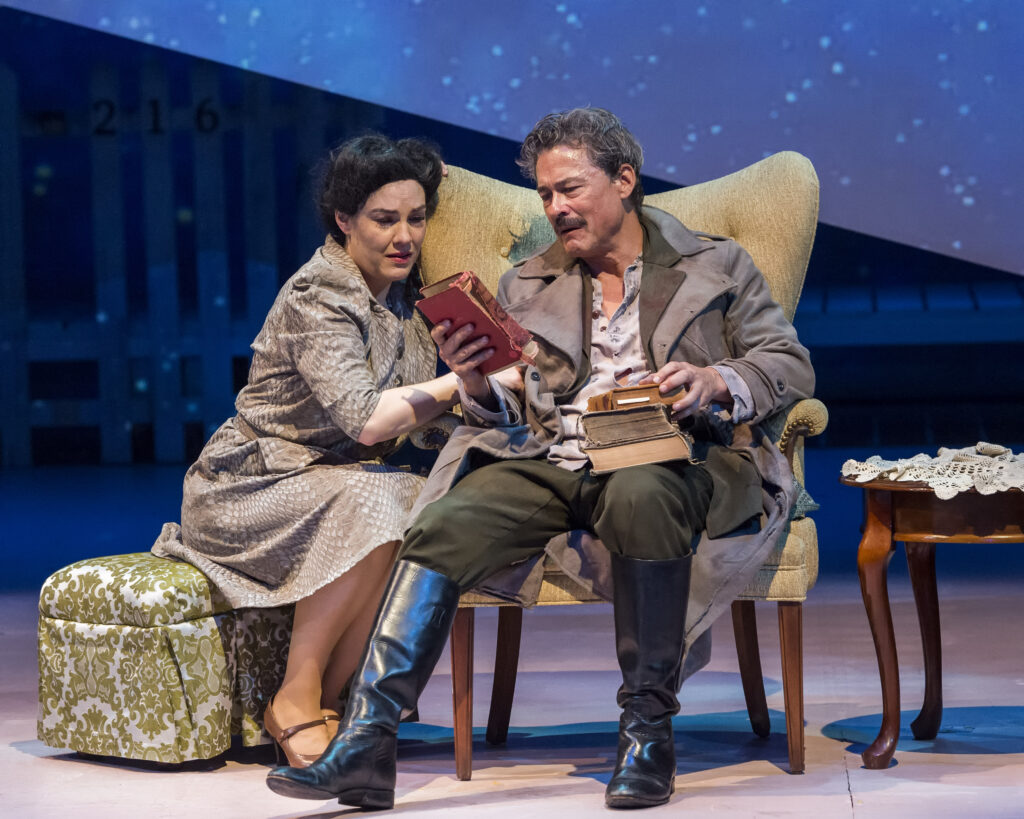 Trisha Miller and Frederick Stuart in The Skin of Our Teeth by Craig Schwartz.
Trisha Miller and Frederick Stuart in The Skin of Our Teeth by Craig Schwartz.
